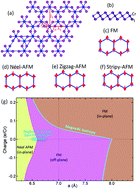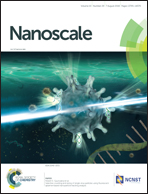Tunable spin states in the two-dimensional magnet CrI3
Abstract
The recent discovery of ferromagnetic single-layer CrI3 creates ample opportunities for studying the fundamental properties and the spintronic applications of atomically thin magnets. Through first-principles calculations and model Hamiltonian simulations, here we build for the first time a substantial magnetic phase diagram under lateral strain and charge doping, the two factors that are easily modulated in single-layer CrI3via substrate and gating controls. We demonstrate that both lateral strain and charge doping efficiently change the coupling between the local spins and thus have unexpected effects on the magnetic properties of CrI3. In particular, the strain tunes the magnetic order and anisotropy: a compressive strain leads to a phase transition from a ferromagnetic insulator to an antiferromagnetic insulator, while a tensile strain can flip the magnetic orientation from off-plane to in-plane. Furthermore, we find that the phase transition under compressive strain is insensitive to charge doping, whereas the phase transition under tensile strain is modulated by electron doping significantly. Our predicted magnetic phase diagram and rationalized analysis indicate the single-layer CrI3 to be an ideal system to harness both basic magnetic physics and building blocks for magnetoelastic applications.



 Please wait while we load your content...
Please wait while we load your content...
